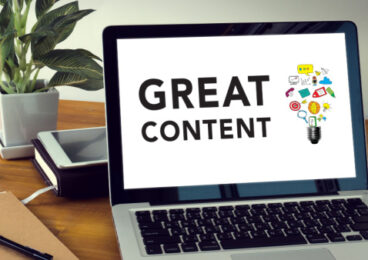 Reading Time: 5 minutes
Reading Time: 5 minutesAs we look toward the new year, many businesses have assessed what their marketing plans will be for the upcoming year and assigned budgets.
How much will we invest in email marketing? What about paid search? SEO? Web design? Conversion Rate Optimization?
Many of these decisions may be made based on well-intentioned beliefs about what works. But ask yourself . . . how many of these decisions are based on analytics? Do you have the data you need to make truly informed decisions about how budgets should be allocated?
In 2023, analytics is going to be a huge area for your business, whether or not you realize it.
Studies on the market share of analytics providers will vary, but most companies rely on Google Analytics as their web analytics provider. If you haven’t already heard the news, the Google Analytics you’re accustomed to using is about to change drastically by migrating to Google Analytics 4. If you haven’t already done so, you need to begin the migration process. Universal Analytics will stop collecting data on July 1, 2023. If year-over-year data is important to you, you should have started the migration process sooner than now.
Even if you’ve set up a new Google Analytics 4 profile and started collecting data, logged into the profile, and poked around, you may have found that the reports you are accustomed to seeing are now gone. You have to build reports to get the data you want to see. But, this information isn’t all bad news.
The new data architecture gives us an opportunity to more easily measure interesting events and site activity. It’s also not limited to 20 goals, so we can track many more events and tag them as conversions. So many UA properties had to compromise or combine different conversions into a single goal to squeeze into the max 20 limit. This new architecture provides the opportunity to become more granular and measure more metrics.
Was “Google Analytics Configuration” in your 2023 budget?
If not, you should find a way to squeeze it in because all good marketing decisions are based on solid analytics.
What does it mean to have solid analytics?
At a base level, you should be able to distinguish between the traffic sources that drive your business. How do organic search, paid search, display, email, and social stack up against your key performance indicators? If you are thinking about this critically, you should be focusing beyond simple traffic metrics and thinking about the things that move the needle for your business (e.g., leads form submissions, phone calls, e-commerce transactions, white paper downloads, or even just time on the site). Making budget decisions based on traffic alone would be a mistake. Which channels are driving revenue?
It’s super easy to see “e-commerce revenue” to figure out what works and what doesn’t for an e-commerce business. However, many businesses need to break things down a bit more, which requires math.
Here’s what I mean.
If you’re a B2B concern and your website’s purpose is to drive leads to your business, which you hope to later qualify and eventually realize sales, you’ll need to understand your conversion rates from traffic to lead, lead to qualified lead, and qualified lead to a sale. Do you have analytics that follow this entire path? Do you have your CRM system “talking to” analytics data so that you have a complete picture and understanding of performance? Google’s Looker Studio provides a free framework you can use to curate meaningful reports using disparate data.
If you want to pass the marketing channel through to your CRM or book of records, you may need to invest in application development to also capture UTM tracking parameters all the way through to the final sale or order.
Alternatively, you can use the Data Import function in GA4 to ingest this data, which can then be visualized in Looker Studio.
If you don’t have things as tidy as this, you can start with some generalities. Here’s an example scenario:
- You know that your conversion rate from traffic to a lead averages 5% from your paid search efforts.
- You know that your conversion rate from leads derived from paid search efforts into “qualified” averages 40%.
- You know that your conversion rate from qualified leads to sales averages 30%.
- You know that your average sale realizes an average net revenue of $10,000.
First, you’ll notice the word “average” quite a bit. Because we don’t have perfect analytics, we must use an average. It’s not perfect, but it’s better than a hunch as to what works and the net-profit possibilities.
10,000 visitors x 5% conversion rate = 500 leads
500 leads x 40% conversion rate (into “qualified” status) = 200 qualified leads
200 qualified leads x 30% conversion rate (into a sale) = 60 sales
60 sales x $10,000 average net revenue = $600,000
So what’s the cost of the 10,000 clicks? At a $5.00 CPC average, that would be $50,000.
Did it cost money to manage the effort (Agency or otherwise)? Add that here, too. Let’s say it’s 15% of the spend ($7,500). So, the total investment into paid search was $57,500. This number brings the final math to $600,000 – $57,500 = $542,500. You can use our B2B PPC ROI calculator to help you think through various scenarios.
Now you have an ROI model to consider for how efficiently paid search efforts drive sales for your organization. However, be sure to segment the different campaigns because they will have different purposes and returns. For example, separate branding and reputation management campaigns from customer acquisition to get a fair comparison. You may also want to separate campaigns for various products because some categories convert better than others for various reasons.
What about SEO?
For the same B2B scenario above, we can apply the same formula but without the “cost per click.” If you’re just beginning an SEO investment, you must understand you need to spend significant time doing research upfront, so you won’t immediately realize increases in rankings or traffic. Think of it as a set-up fee—the cost of which should be amortized over the lifetime of the investment into SEO.
If we consider a monthly investment of $10,000 for SEO for the example above, you can run some projections as to how much revenue might be derived from the investment. As I shared in a recent article on Search Engine Land, there are tools and methods to get some decent math behind projections of potential return from your SEO investment. But how much traffic do you need to realize a decent return on investment (ROI)? Once again, we have a calculator for that (see our B2B SEO ROI calculator).
If we have our analytics set up properly and have good backend (CRM/sales) analytics, we should have some figures for conversion rates to work with. For the sake of this post, I’ll use made-up conversion rates to illustrate how this could be done.
Investment into SEO = $10,000 per month. How much traffic do we need for a positive ROI?
1,000 visitors x 5% conversion rate = 50 leads
50 leads x 40% conversion rate (into “qualified” status) = 20 qualified leads
20 qualified leads x 30% conversion rate (into a sale) = 6 sales
6 sales x $10,000 average net revenue = $60,000
You should conduct this exercise for any active channel. Try to do this math for specific to campaigns you’re running. The idea is to make informed decisions. And if you find that you’re unable to make informed decisions, perhaps become more determined to invest in analytics so that you plug the holes in your ability to effectively measure ROI.
I fell in love with digital marketing many years ago because of its ability to be measured and optimized. In 2023, make a goal to get better at analytics and measurement so that you can feel more confident in investing more into the channels you know work best.
At Vizion Interactive, we have the expertise, experience, and enthusiasm to get results and keep clients happy! Learn more about how our SEO Audits, Local Listing Management, Website Redesign Consulting, and B2B digital marketing services can increase sales and boost your ROI. But don’t just take our word for it, check out what our clients have to say, along with our case studies.




